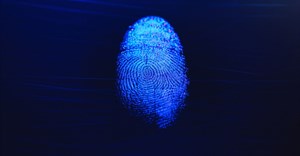Trending
Biometric security introduced to Design Indaba

Security has always been tight at Design Indaba and this year will be no different. In fact, the Indaba is going high-tech and implementing a biometric security system to, in its own words, “reflect the world class event that it is.” Of course, the issue has more to do with delegates swapping access cards with colleagues not lucky enough to have secured a seat and less to do with crime in the conventional sense.
Tags remain non-transferable
Biometrics uses intrinsic physical (and in some cases behavioural) traits for identification of an individual. At the Design Indaba you will be fingerprinted before you will be able to collect your access tag. Oh, and it will be matched with your ID book to ensure the tags remain non-transferable.
As soon as it became apparent that biometrics would be implemented, various questions were put to Design Indaba on Twitter, enquiring about the reasoning and technology solution behind the move.
The queries seem to have caught the Design Indaba team by surprise. Answers consisted of promises to give answers as soon as "the literature from supplier" arrives. You have a security system without literature from your supplier?
When the organisers finally received and forwarded some information on the hardware they intend using (the U.are.U 4500 Reader), it was a one-page product overview and very little else - except for information on biometrics gleaned from www.Howstuffworks.com.
Pertinent questions
But, as Jon Tullett, managing editor of TechTarget SA, points out, some pertinent questions remain unanswered.
"What format is the data in?" he asks. "If there's a unique format to any given scanner, then there's very little risk of captured data being reused. Privacy isn't much of a concern, practically, but people will still perceive it that way.
“Regardless - what is the retention policy? Is this show organiser going to retain the data and use it in the database for another show, for example? Do you want people tracking your appearance at multiple shows? On which note, will the data be shared with other show organisers? What is the operational policy for refusals? For people without the required finger? For people with hygiene concerns - if you have a cut on your finger, do you really want to put it on a scanner after the bloke in front of you coughed on it?"
Market research firm Frost & Sullivan released a report in December 2009 stating that “the convergence of security for physical and logical access control through the use of smart cards with embedded fingerprint biometric technology is... projected to become the standard in many organisations for secure identity management.”
Consumer acceptance
That doesn't mean consumers will accept this security solution without detailed information on how their personal information will be used and secured or how objections based on individual beliefs will be handled.
As far back as 2005, the BITE project warned that “any biometric system must be prepared to deal with individuals who cannot or will not participate in the programme.” Informational privacy, physical privacy and religious objections where all identified as key socio-cultural concerns. We already know Design Indaba is world-class. Which is why it is reasonable to expect clear communication around any issue of interest or concern to the also world-class attendees.
Peter Badenhorst, chief creative partner at M&C Saatchi Abel, finds the prospect of being fingerprinted to be admitted to a conference appalling and considers it an invasion of his privacy. He argues that privacy is fast becoming the most valuable commodity in the world as marketers and governments get to know more and more about individuals, their tastes, behaviours and views.
Function creep is a valid concern and describes how information collected for one limited purpose is gradually allowed to be used for other purposes. Concerns about identity theft from biometric databases by hackers (or rogue employees) are also on the rise globally. Organisations need to be aware of the societal backlash being generated by concerns over lack of privacy and personal freedom.
Are there less invasive ways?
Nausher Rahman, director: digital at grid, asks if there are less invasive ways of monitoring a crowd.
"I certainly don't want my fingerprints to sit in a database somewhere, tagged against my name, ID number and perhaps my address, or at least work details," says Rahman. "What are they looking to achieve with this? Crowd tracking and control mechanisms? In which case RFID (radio-frequency identification) would work fine. What does taking a fingerprint scan do that other (more readily accessible) solutions can't?"
Nevertheless, not everybody shares these concerns. Louise Marsland, editor of AdVantage magazine, says that while security at Design Indaba has always been strict, she does not view fingerprinting as invasive.
"I go to tons of events in SA, including others where high profile business leaders and politicians are speaking and there is never such [a high level of] security," comments Marsland, before hastening to add, "I've never considered the issue of fingerprinting invasive - our estate, like so many others in Joburg, will soon be installing fingerprint access control to combat crime."
Perceptions
Graphic designer and illustrator, Jonno Cohen, points to the emotive aspect of biometrics, where a fingerprint is perceived as much more personal and private than other methods.
"Obviously, coming from a marketing angle, perceptions are often more important than the reality," says Cohen. "These are legitimate reasons to use fingerprinting, but given the negative hype around SA and the [2010 FIFA] World Cup, maybe the organisers have missed a trick and sent out the wrong message.
“I think smart people should be able to discern between the issues, but the media will likely jump at the opportunity to hack together another sensational story about South Africa and its security problems."
Smoother registration could hasten acceptance
Hygiene could also be an issue for delegates, believes Dave Duarte of Huddlemind, especially given the heightened awareness of germs around the swine-flu epidemic last year. Duarte also admits that some people will feel that sharing their biometric information with a conference company is unnecessarily intrusive. At the same time, if it smoothens out the registration process, he believes it should be well-received by most delegates.
I didn't come across anybody who felt biometrics is part of a global conspiracy to rob them of their anonymity and personal freedom. I did come across well-articulated concerns regarding privacy, hygiene and the message that the use of biometrics might send to some in the international press seeking a sensational angle on crime and international visitors during the world cup.
Most of the issues raised could be addressed with clear communication from the event organisers, and delegates and industry stakeholders could be reassured that alternative arrangements are being made for those not willing or able to participate in the biometric scheme. Being of international standard also means anticipating delegate needs and concerns and addressing them appropriately.
As the rollout of biometric security systems for events in South Africa (and worldwide) accelerate, a policy of engagement with those affected will prove vital to its successful implementation.
Bizcommunity.com contacted representatives off Design Indaba with a request for a written reply to this story. At the time of going to press, no such written reply has been forthcoming.
Update Wednesday, 3 March 2010: The biometric security system seemed prone to sporadic failure. It seemed to really only be fully operational on the second half of the second day and on the third day of the conference. The scanners were very sensitive and did not always immediately verify delegate fingerprints. It left some exasperated delegates (not to mention security personnel) on especially the first day of the Indaba. Personally, I found it rather unhygienic, especially considering how often delegates had to pick up snacks during coffee breaks and breakfast by hand.
- Bizcommunity: Design Indaba special section
- Bizcommunity: Design Indaba twitterfall/twitterwall
- Herman Manson on Twitter (reporting live for Bizcommunity): @marklives
- Email Herman Manson your news and views:
- Terry Levin on Twitter (reporting live for Bizcommunity): @terrylevin
- Design Indaba website: www.designindaba.co.za
- Design Indaba website twitterstream: www.designindaba.com/juitter
- Facebook: Design Indaba group
- Twitter: @DesignIndaba
- Bing Twitter search results: Design Indaba, DesignIndaba or #designindaba
- Twitter Search: Design Indaba OR designindaba
- Twitter Search: Design Indaba OR DesignIndaba OR diconference OR diconf
- Twitter Search: diexpo
- Twitter Search: fingerprint OR fingerprinted OR fingerprinting near:"cape town" within:1000mi
- Afrigator search: Design Indaba
- Google News Search: Design Indaba


















